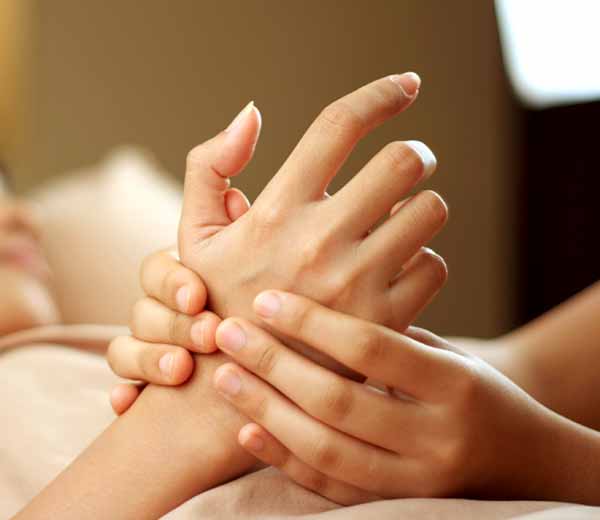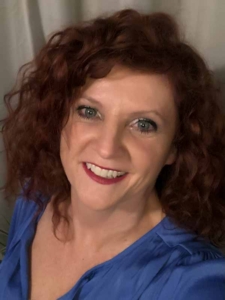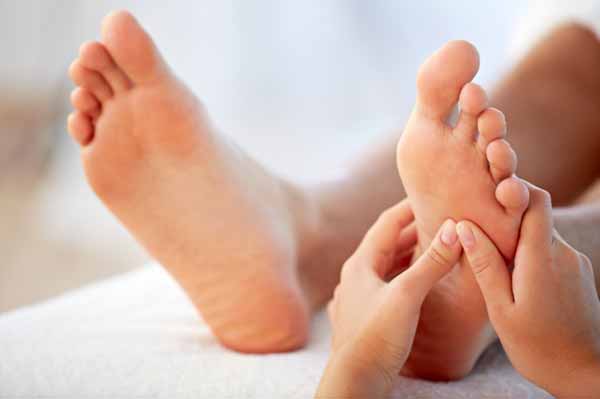
Where does The Practice of Reflexology Come From?
Dating back to 2330 BC, the first record of Reflexology is seen in an Egyptian physician’s tomb. Traces of foot work also appear in other cultures such as China, India and Europe going back thousands of years indicating that no 1 culture invented it. Researchers believe that the art is well over 5,500 years old. Today’s methods are based on the work of Dr. William Fitzgerald who studied the art of pressure therapy in Europe and pioneered Zone Therapy in the USA and that of Eunice Ingham who systematized and popularized the therapy in the 1930’s. Research is ongoing proving the benefits of Reflexology.
Catherine Arnott, President IBSIG
Happy New Year to all
What is Reflexology?
How can it help your business?
By: Mary Jardine, RCRT™, LCRT, and Divorce Life Coach
Past President Board of Directors with the Reflexology Association of Canada (RAC)
 Imagine yourself on a beach, feeling the rays of sunshine. You’ve just stepped out from the cool water and you’re relaxing on a comfortable chair soaking up the sights, sounds, and heat. Your heartbeat is steady, your breathing is relaxed. This is how clients have described they felt after receiving a reflexology session: relaxed, light, grounded, and balanced.
Imagine yourself on a beach, feeling the rays of sunshine. You’ve just stepped out from the cool water and you’re relaxing on a comfortable chair soaking up the sights, sounds, and heat. Your heartbeat is steady, your breathing is relaxed. This is how clients have described they felt after receiving a reflexology session: relaxed, light, grounded, and balanced.
It was 23 years ago that I, Mary started my practice and learned the benefits of reflexology. Through an illness I was diagnosed with, which offered no medication to heal or cure me, I turned to Reflexology and the results were instant. If you have ever suffered from the stress that leads to digestive issues this is where I found myself. In 2006 I trained to become a teacher of the foot, hand, and ear Reflexology and have taught numerous students through my classes. This passion for Reflexology, natural non-invasive healing art is why I continue teaching this modality & skill in the Durham Region.
Reflexology is a natural therapeutic method based on the principle that there are reflexes in the body that correspond and map to other parts - glands, and organs of the body. Through the application of pressure on these reflexes, reflexology therapy can relieve tension, improve circulation, and support the body’s efforts to function optimally. The most common applications of reflexology map the whole body to reflexes found in specific areas, like the feet, hands, or ears.
Reflexology has many benefits from helping clients to manage musculoskeletal pain, to improving quality of sleep, reducing symptoms of anxiety and stress [1], and decreasing hormonal and digestive issues [2] to name a few.
There are four points where I find Reflexology to really shine among other health modalities.
1. Reflexology is reflective – If you are experiencing pain in a specific body part, a Reflexology Therapist can help alleviate the pain by working on that reflex on a corresponding body part. For example, if you are experiencing pain on your hip, a Reflexology Therapist can work the hip reflex point on your ears, feet, hands, face, etc. .to help your body start healing itself.
2. Clothing is not removed – Aside from outerwear, such as shoes, mitts and hats, clothing is not generally removed, which can be appealing to many clients.
3. Benefits the entire body – Our bodies have the amazing ability to heal itself. Following illness, stress, injury, or disease, however, often our bodies are in a state of “imbalance” preventing it from functioning optimally. While a Reflexology Therapist may only physically touch one body part, through the interaction of the body’s systems, reflexology can be used to restore and maintain the body’s natural balance and facilitate healing.
4. Cost-Effective – It is less expensive to stay healthy – keep your body functioning optimally through regular reflexology sessions– than to try and fix a problem after the fact. The average cost of a reflexology session is generally below the cost of other health care. In short, you get more for less!

Integrating Reflexology into your business
Due to the reasons listed above, Reflexology is a fantastic addition to your current holistic wellness practice. Reflexology can be integrated as a complementary service to your current offerings or combined with other modalities into a combo package. Mary offers a course that teaches the methodologies as nurse’s you are well on your way with the theory...this would be a reduced cost to the certification course.
How to become a Reflexology Therapist
While there is no regulated program for reflexology education in Ontario, in general, to become a reflexology therapist involves taking a certification reflexology course that combines both the theory of reflexology (core reflexology) along with a reflexology methodology (whether it is foot reflexology, hand reflexology, ear reflexology, face reflexology, etc.). Interested individuals can go to the Reflexology Association of Canada’s website to find an accredited course or course provider near them. Courses on this website have been reviewed to ensure that the course delivered meets the association’s minimum eligibility requirements for graduates to take the RCRT™ Exam – the association’s professionalism assessment to become a Registered Canadian Reflexology Therapist.
So, what are you waiting for! This holiday, I encourage you to find a Registered Canadian Reflexology Therapist to experience the benefits of reflexology for yourself!
You can learn more about reflexology, find a therapist, or find an accredited reflexology certification program by going to the Reflexology Association of Canada’s website: www.reflexologycanada.org
We all could use a little reflexology!
Please click the link below to see the video which shows both working reflexology and where points are.
Experience Reflexology Video
[1] Wang, W. L., Hung, H. Y., Chen, Y. R., Chen, K. H., Yang, S. N., Chu, C. M., & Chan, Y. Y. (2020). Effect of Foot Reflexology Intervention on Depression, Anxiety, and Sleep Quality in Adults: A Meta-Analysis and Metaregression of Randomized Controlled Trials. Evidence-based complementary and alternative medicine: eCAM, 2020.
[2] Inkaya B, Tuzer H. Effect of Reflexology on the Constipation Status of Elderly People. Yonago Acta Med. 2020 May 18;63(2):115-121.
For more reflexology research visit: www.reflexologycanada.org/reflexology-research/

